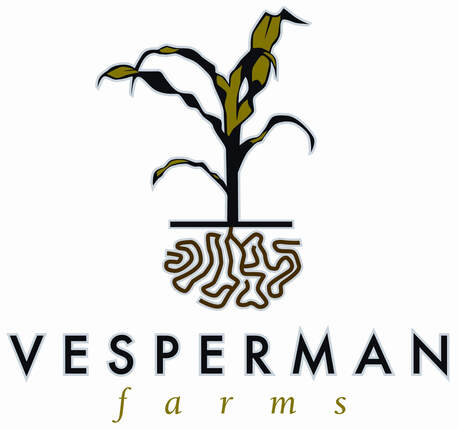|
This past weekend, I brought my little assistant to help transplant Bruce's giant pumpkins. Okay, he didn't help at all (these pumpkins need a practiced gardener, not a 2-year-old on a mission to move all the dirt in Grant County), but we did get to see the next step in giant pumpkins: getting them into the ground! Last week, Bruce planted six giant pumpkins, and Saturday he put two more in the ground. We helped with one. He trimmed up these baby bigs, removing flowers and extra leaves to get them ready for planting. Then we drove over to the field, which might not look like an action-packed place right now, but the real magic is about to start. Bruce plants these pumpkins sideways so they can follow the ground and so they don't break under their own weight as they grow. He spreads some Miracle Grow, kelp fertilizer, and a little insecticide for each plant to give it a bit of a boost, then he diligently gardens it for the next couple of months.
Each plant is planted about 20 feet away from each other to give them enough room to grow. The goal is to get them big enough and strong enough to have a pollinated pumpkin by the 4th of July, which means that soon this empty-looking field will be a sea a green leaves. These pumpkins can grow up to three feet in just a day, and Bruce says that to accomplish that amount of growth, they need the right amount of rain, good heat, and a lot of love. When I asked him how long he will spend with these plants in the next few months, he laughed and said: "You don't want to know." (Kyle added that Bruce spends more time with these eight giant pumpkins than he does with his 8-acres of normal-sized pumpkins!) My little gardener and I will be checking back in on these pumpkins in the next two weeks and we can't wait to see these plants grow!
0 Comments
Ever wonder how strawberries grow? I did, so I asked Kyle. And he dropped a lot of berry knowledge on me. We don't start our strawberries from seeds, but as plants: a little tiny crown, which is the growing part of the berry, and a root. We purchase this rootstock from a nursery in Massachusetts that specifically raises these little plants and sells them to farms. Kyle picked this nursery in particular because their climate and growing region is similar to Wisconsin's, which makes it easier for plants to adjust and flourish. Sometime in mid-April, Kyle watches the forecast for a few days of good weather and then places an order from the nursery. They then take 15,000-20,000 small strawberry plants out of cold storage, package them up into bundles of 25, and ship them overnight on FedEx Freight to the farm. Once we get them, the real work begins for us, because in the next 2-3 days, all those little plants go in the ground. Kyle, his family, and our fantastic employees work shifts sunup to sundown to plant these little guys, working on a machine called the Transplanter, which can plant up to 1,000 plants per hour. If you want to check out how we plant these berries, check out our Behind the Berries blog! For the first year, we don't interfere much with these little plants. They need this year to grow on their own. All during this time, these individual plants send out runner plants (called "daughter plants"), helping the plant grow and multiply and turning all these individual plants into multiple connected networks of vines. Oftentimes, the plants do fruit (grow berries) during this time, but we come through and pinch these berries off. We want the plant to put all its energy into growing and multiplying so it has a good base for fruiting in its second year.
During the first part of this growing year (in the fall), we do need to care for them. They need weed control and we go through and mechanically cultivate and till the soil. The runners like to go pretty wild, and they don't grow naturally into the neat rows we enjoy while picking berries. Therefore, we have to stop their expansion into places we don't want them to grow in by tilling the plants that are in those areas under and encouraging other runners to grow in rows. A lot of the maintenance that we do during that first year is to make things easier for the pickers - neat rows make it easy to get in an out of fields and give people more access to the berries that they love. Over the winter, the plants will go dormant. After we've tilled, we spray a pre-emergent on the plants and cover them with straw. Although this is to protect them from the cold, it's mainly to help with the springtime growth. As soon as the sun comes out, the berries wake up and want to grow. The straw delays their growth, but in a good way: it slows down their "awakening" so they don't grow too soon or too quickly. The straw also helps suppress weeds and fills the gap between the fruit and the bare ground, therefore protecting the berries from fungal infections that come from the ground. We watch the plants closely throughout the spring and into the summer, and if all goes well, in June we have a great picking season! Once the picking is over, we mow everything off the top, fertilize the field, and do our best to control weeds. Even though there isn't anything aboveground after we mow, the root structure of the plant is still intact below, so the berries spend the rest of the summer and fall establishing new daughter plants and crowns for good fruit. Then we just repeat our process for the next 3-4 years until it's time to rotate fields, which you can read about here. In the next couple of months, we'll feature more of our crops, including raspberries, pumpkins, and our giant pumpkins. Stay tuned! If we're going to start to answer the question How We Farm, I think we need to understand what exactly is our farm. Not the history, but the parameters.
The whole farm is 200 acres. The part everyone is used to and knows about is about 40 of those acres. On those 40 acres are the activities area, the main barn, parking lot, berry and pumpkin patches, and corn maze. The rest of the farm that you see but don't play on is field ground for alfalfa, corn, and soybeans, or whatever the farmer who is renting the land decides to plant that year. The 40-acre difference is made up on a parcel of ground that the family owns just down the road. This is hilly land, with a stream running through it, that is primarily used to grow corn and silage. This gets cut into a salad that feeds dairy cattle at a local farm. Those are the straightforward stats of the farm, but if you want to learn all about the farm's history and past, check out our blog Celebrating 118 Years of Vesperman Family History! While I was out riding in the pumpkin wagon this past fall, a few people asked me why our pumpkin patch had moved. I sort of fumbled an answer about what I assumed was crop rotation, but I realized I really didn't know. And when I don't know things, I bother Kyle. So I asked him: Why do our pumpkin patches move? Crop rotation in a nutshell can accomplish four major things. First, it improves soil nutrition. Crops take a lot of nutrients out of the soil, but they also put some back in. And each crop will take and put different kinds and levels of nutrients out and in of the soil. Moving the crops around can replenish nutrients in the soil, give the land a break from certain crops that can very quickly deplete essential soil nutrition. Rotation also helps keep soil erosion under control, which also helps keep the land healthy and able to continue supporting crops. Second, it help slow down bug and insect infestation. Rotating the crops keeps bugs confused - what was once their preferred food has now moved - and therefore they don't find the crop as quickly or infest as rapidly if you keep them off their game. It can also disrupt the reproductive cycle of breeding insects, meaning that they struggle to either lay their eggs properly or newly hatched insects awake to a different or unacceptable food source. Third, it helps fight agains fungus and virus in plants. Much in the same way that rotation fights insect infestations, it can ward off fungus and virus, too. When fungus finds a plant and a virus inhabits an area, continuing to plant the same crop will encourage the growth of these problems, while switching the crops can slow or even stop their progress through a plant community. And, finally, it helps to control weeds. Rotation makes for healthier crops that will out-compete infestations of weeds and other invasive plant growth. It can also disrupt weed growth that will occur more frequently and rapidly in a mono-culture, which is a long-term growth of the same plant in the same area. Basically, how I understand it, is that moving the crops keeps the problems that plague and pest both crop and farmer guessing and off their toes, which means the crops have a much better chance of survival and the farmer a better chance of a successful crop. Now that I understood the basic premise, I had a few other questions: Why do the pumpkins move every year and the strawberries stay in one place for a couple years? The short answer is they have different growth cycles. The long answer is the berries are a perennial crop and the pumpkins are an annual crop. Annual crops start from a seed, grow, mature, multiple, and die all in one growing season. Perennials like strawberries start and grow in one year, multiple and reproduce in the second year, and continue reproducing and maturing in the years following. For annual crops, moving them around is essential and logical: they are restarted every year and so they are able to be moved frequently. Production of strawberries drops off after 3-4 years of keeping them in the same spot - after this time, the nutrients in the soil have dissipated and bugs and fungus have often found the plants. This means it's time to give the field a break and move the berries to another location. Does rotation cut down on the use of fungicides and herbicides? Yes, it can. But so much of this also depends on other growing factors, like the condition of the soil, the weather patterns, and the health of the seeds and young plants, so rotation doesn't always guarantee that these aren't necessary for a healthy crop. Do farmers have to plan out their crop rotations years in advance? Depending on the size of the crop land and the number of plants in rotation, yes. Smaller farms can often undertake less planning, but more the more you have to consider, the more complicated the rotation plans get. Ours are pretty simple, so we plan a couple years out. For more blogs about how and why we farm, check out our How We Farm tag. And if you have any questions, drop them in the comments!
"The pumpkin is a womb" is probably the most poetic thing I've ever heard Kyle say. But I guess after 20+ years of growing, there's a lot of love between the pumpkin and this pumpkin farmer. Today the crew is finishing planting the 7-acre pumpkin patch at the farm. We plant a few varieties, from small cooking pumpkins to bigger ones for carving. In the next week or so, the pumpkins will start to pop out of the ground, and in 95-115 days, they will be fully grown, ready for fall. Planting this year has taken about three days. The rain, including the spectacular cloudburst on Friday night, delayed us a few times. But the hot weather the last two days made for a great day of planting today! To plant the pumpkins, Kyle uses a modified corn planter - an old Case plate planter - which seats two people, each in front of a seed hopper. These helpers drop seeds into into the hopper, which disperses the seed into the furrows. It's a hot, slow job, but it used to be a lot more painstaking. Like all things here at the farm, Kyle has constantly innovated his process - today we plant more pumpkins than we ever have, but at least it's not all on our hands and knees! When I asked Kyle about what he's learned after all these years of growing pumpkins, he said it just comes down to weather and timing. Pumpkins need a good amount of rain right after planting to establish their root structure and develop their vines, but the hot, dry heat of August is perfect for when they are setting fruit. Last year was one of the best years for pumpkins: a lot of rain in July and a hot, dry August and early September.
It was during this conversation that I learned the pumpkin itself is really just a vessel (or womb, as Kyle said, to my delight) for the pumpkin seed. The pumpkin grows the outer skin and pulp during hot weather, which in turn serve as protective covering for those seeds. The pumpkin protects its seeds until the outer portion breaks down, releasing these soon-to-be pumpkins into the ground and starting the growing process all over again. So the next time you find a whopper in the patch, give it some credit: it's been doing a really good job. And now I have a lot of questions about which came first: the pumpkin or the seed? This week, we planted 16,000 strawberry plants. It took twelve hours, seven people working in shifts, one tractor, and a lot of sunscreen to plant the new fields, which cover about two acres. We won't see a strawberry crop off these plants this year, though. These little babies will take the next year to spread through the runners and grow into big healthy plants - they'll be ready for strawberry season 2019! This June, we'll be doing a final pick on the fields by the house, which will then be tilled under for a new crop. Kyle rotates crops every 3-4 years to give the fields a break and ensure healthier plants and soil. 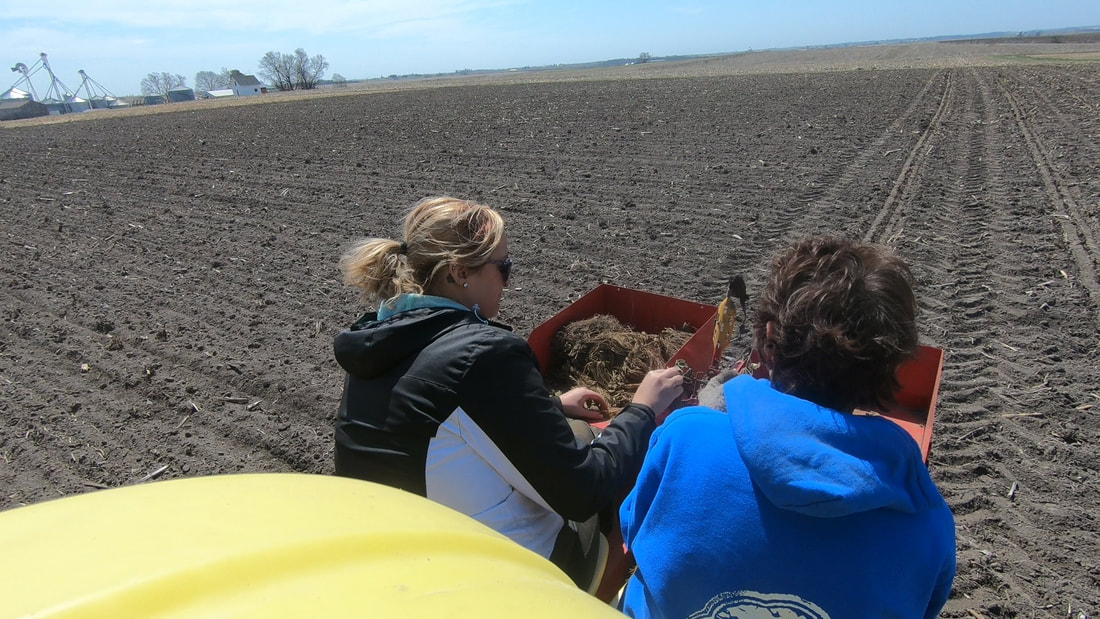 The first Vesperman strawberry patch was by the white barn, located right where the duck races are now. Kyle, Judy, and Bruce planted that first field - about 5,000 plants - by hand, spending days on their hands and knees digging, planting, and watering. "We were younger back then," Kyle says with a shrug. Today, strawberries are planted by a Transplanter. Hitched to the back of the tractor, the Transplanter seats two people in some actually pretty comfortable chairs. While Kyle drives the tractor at slow idle speed, the planters grab plants from two large compartments and feed them into a wheel. Each individual plant is placed into rubber fingers. As the tractor moves, the Transplanter opens up the furrow and drops the plant in, watering it at the same time. Then the packing wheels close the furrow back up. Check out the video below for a little taste of strawberry planting! We hope to see you in June! Since season dates and patch conditions are subject to change, check out our Facebook page and website for the most updated information. Happy picking!
|
Vesperman FarmsFun on the farm...in blog form! Archives
August 2021
Categories
All
|
|
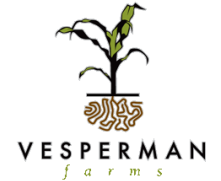
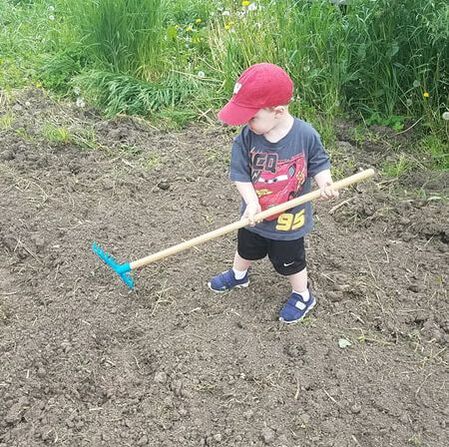
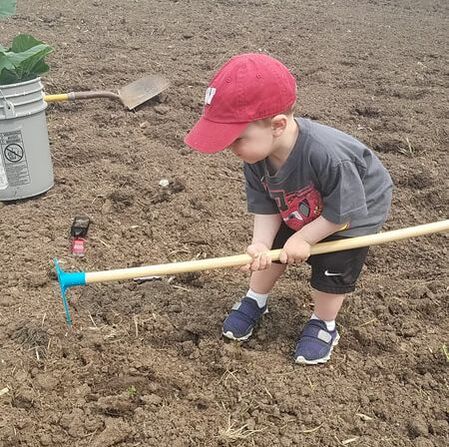
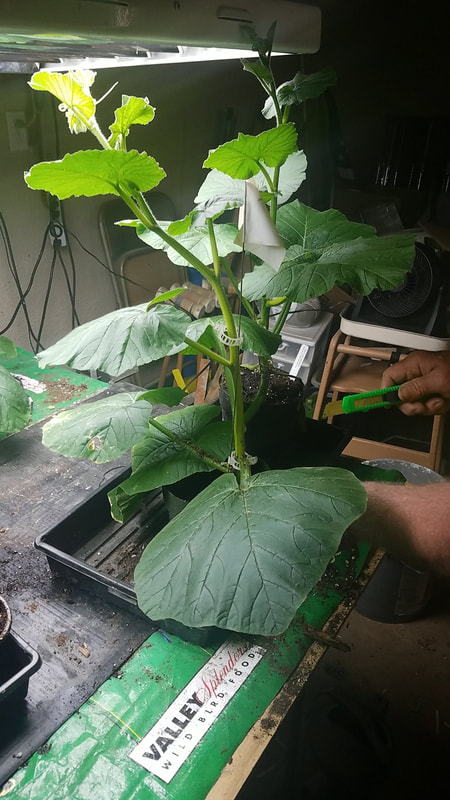
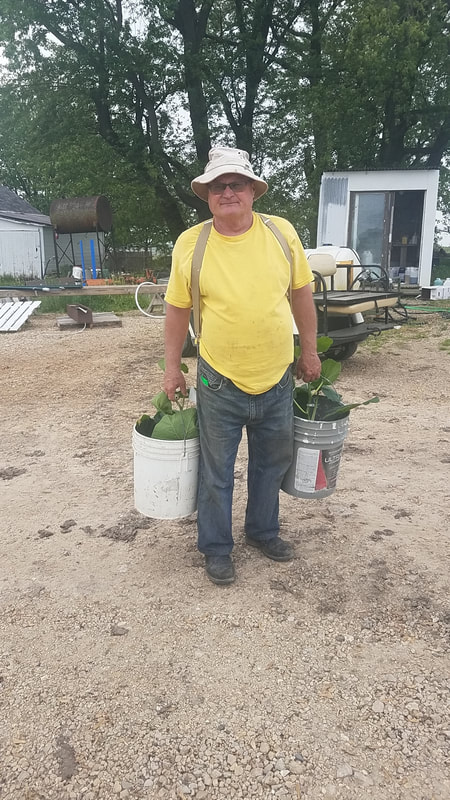
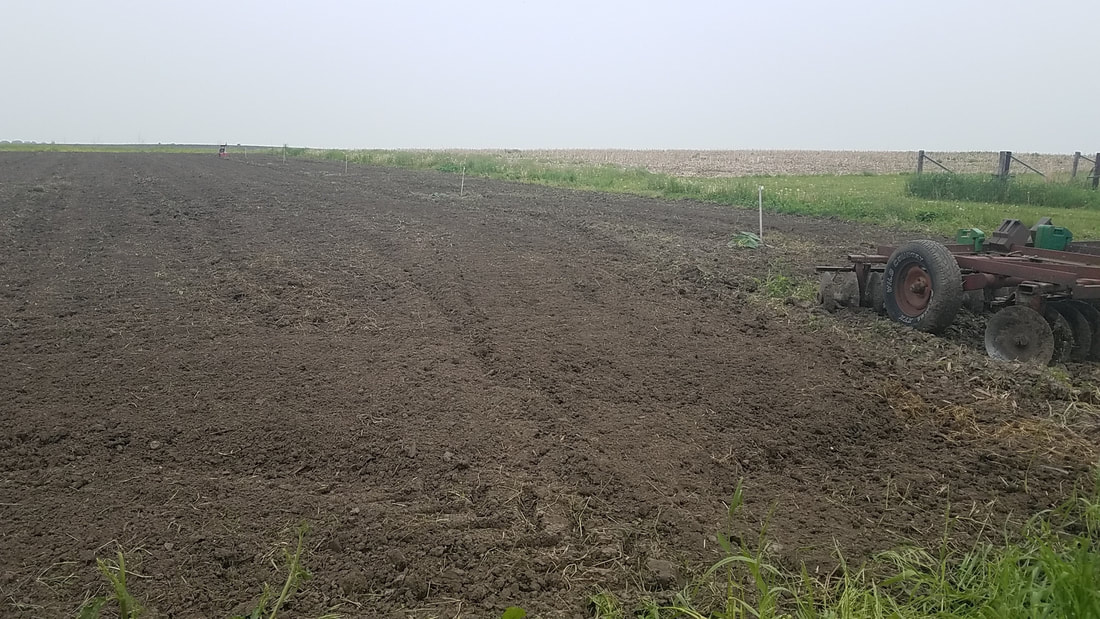
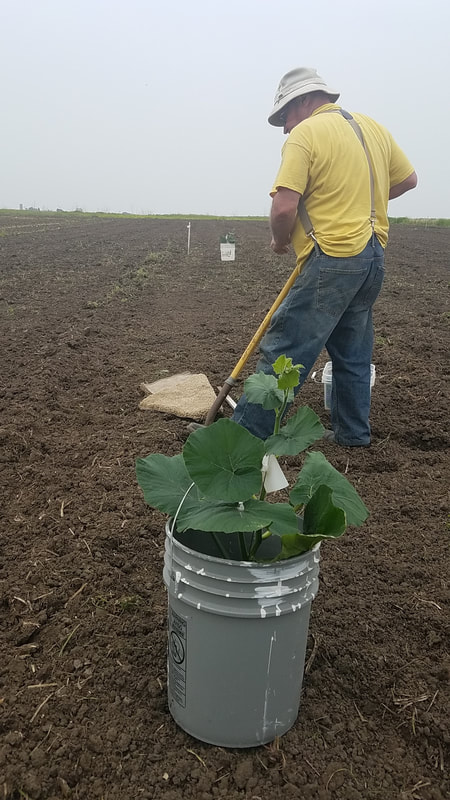
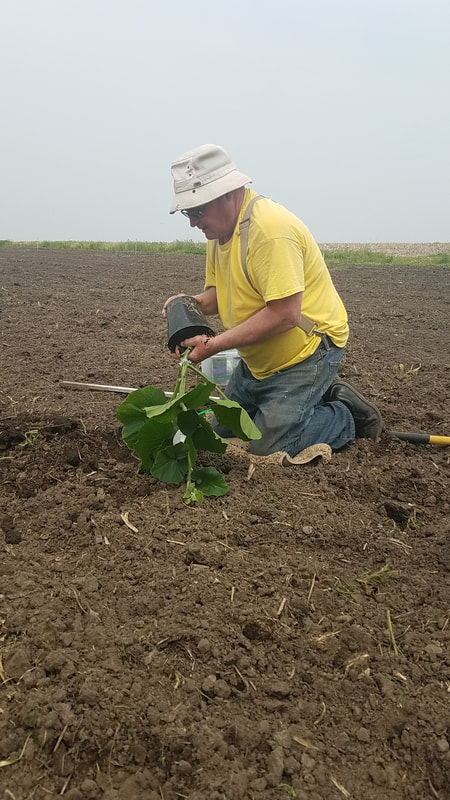
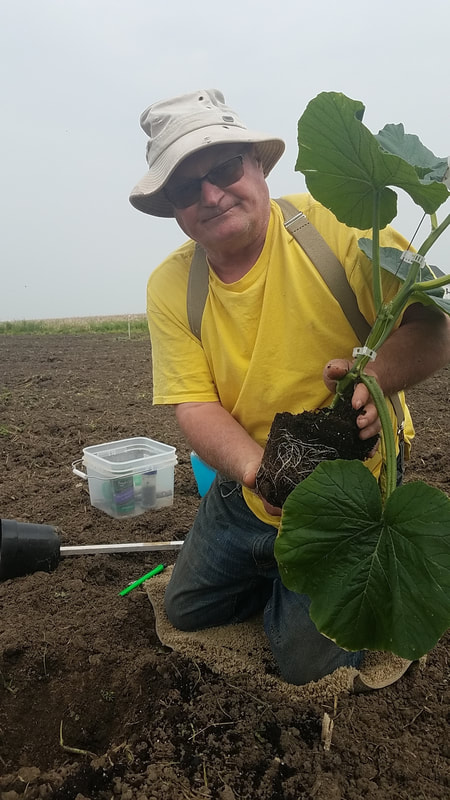
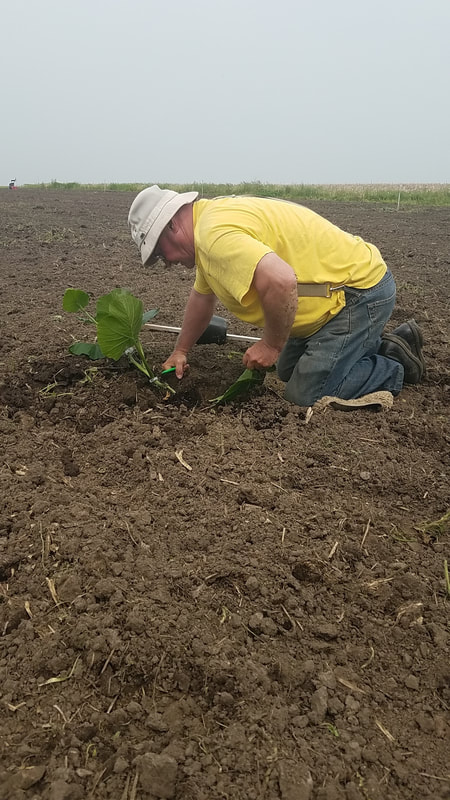
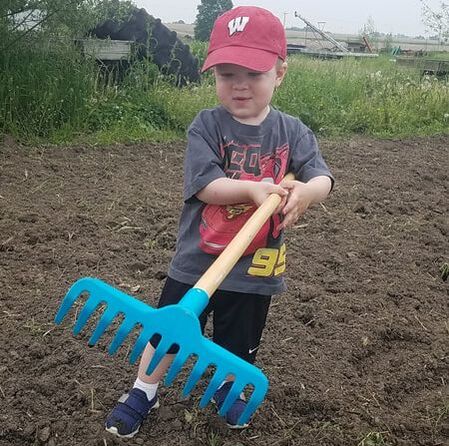
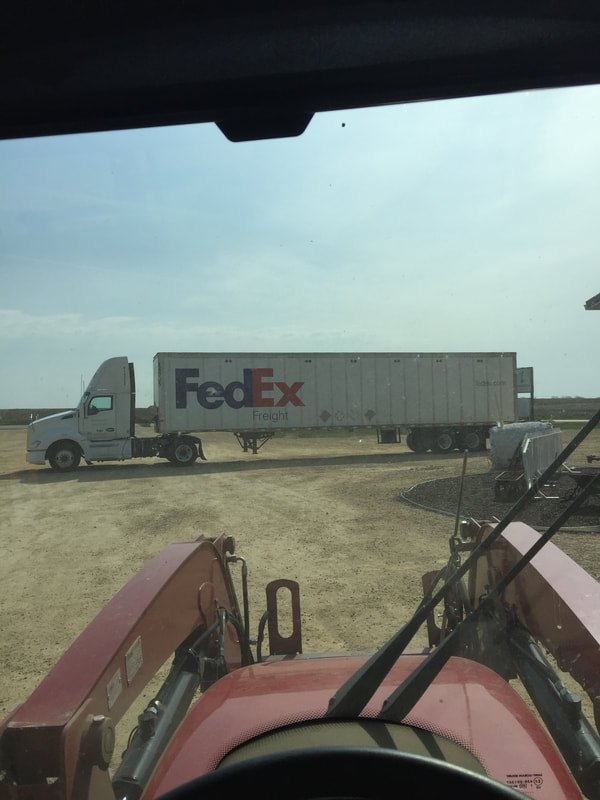
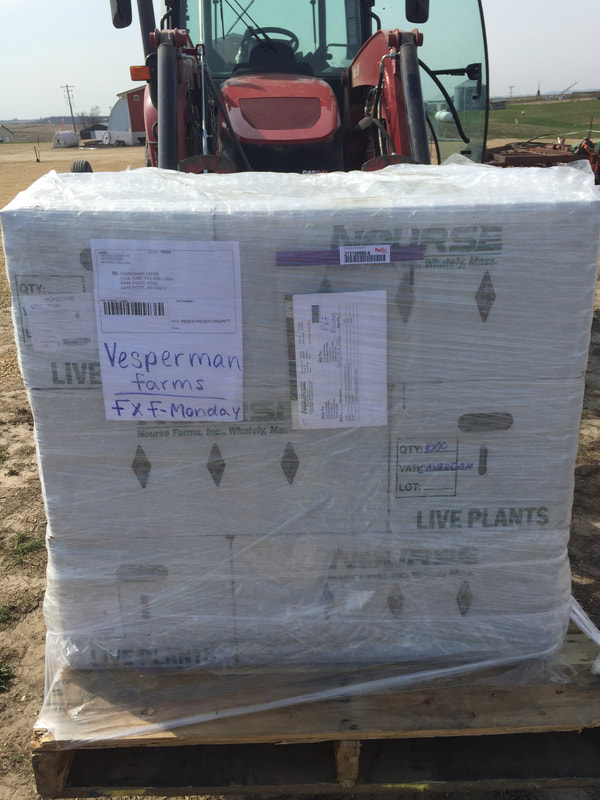
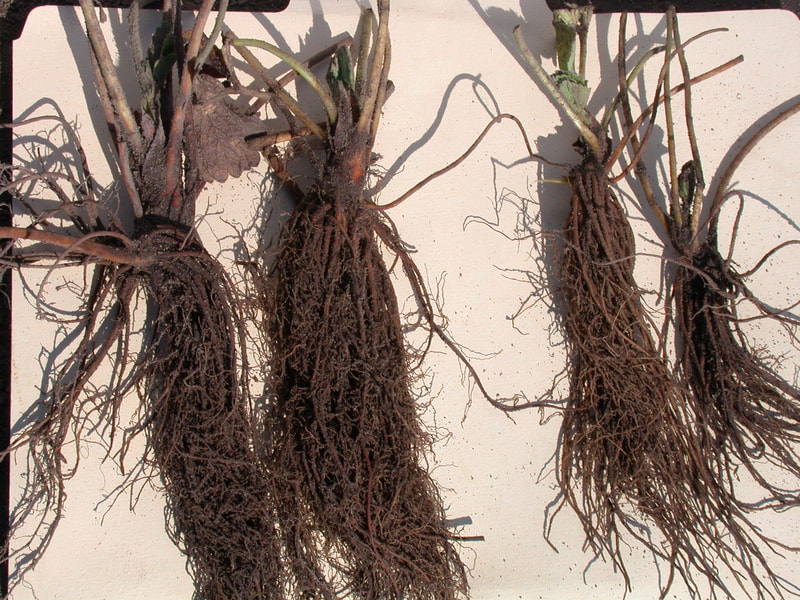
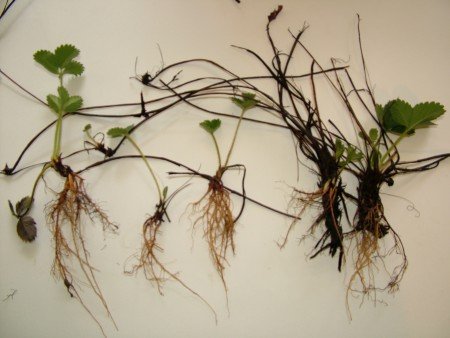
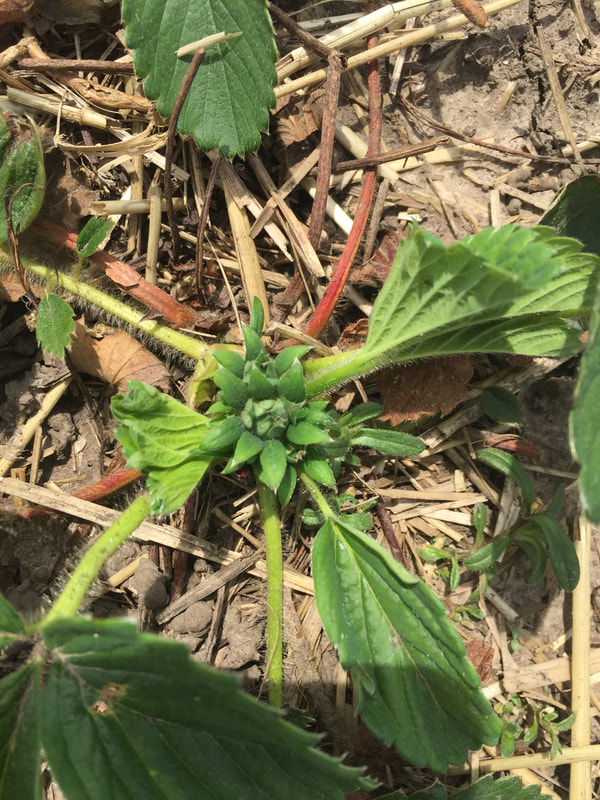
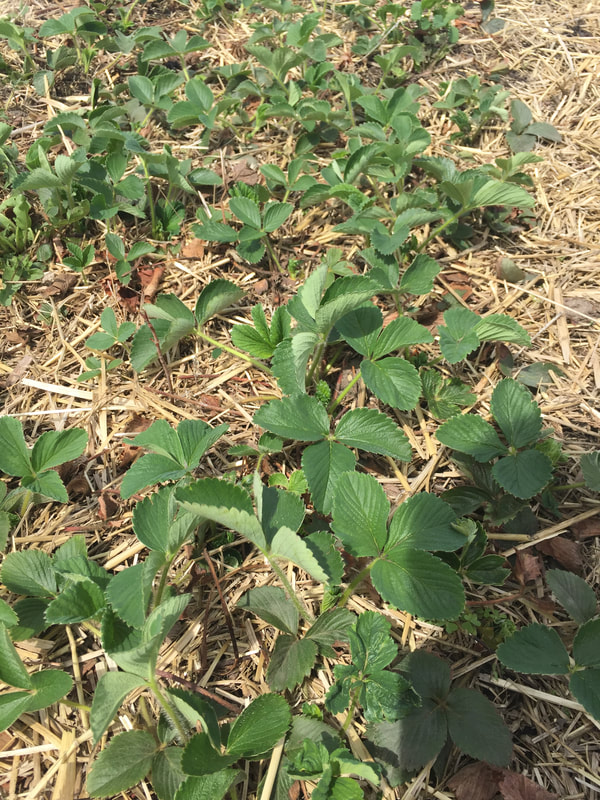
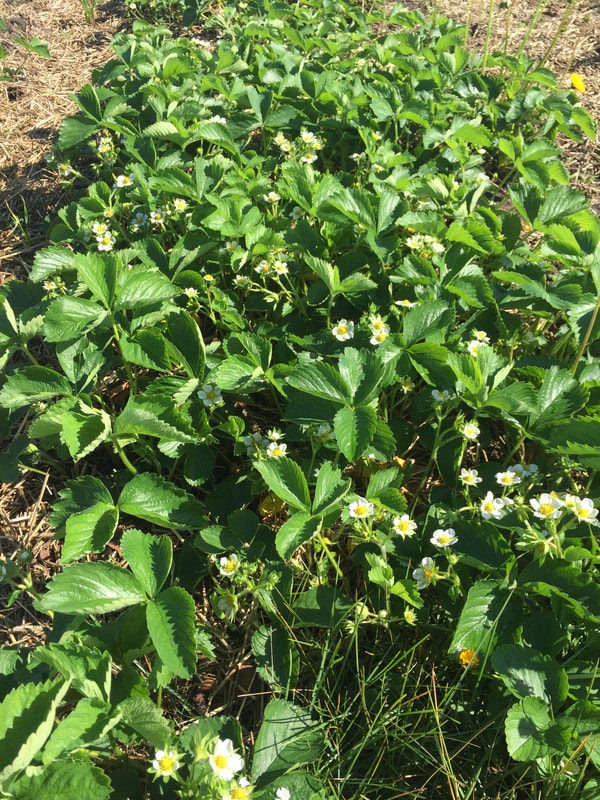
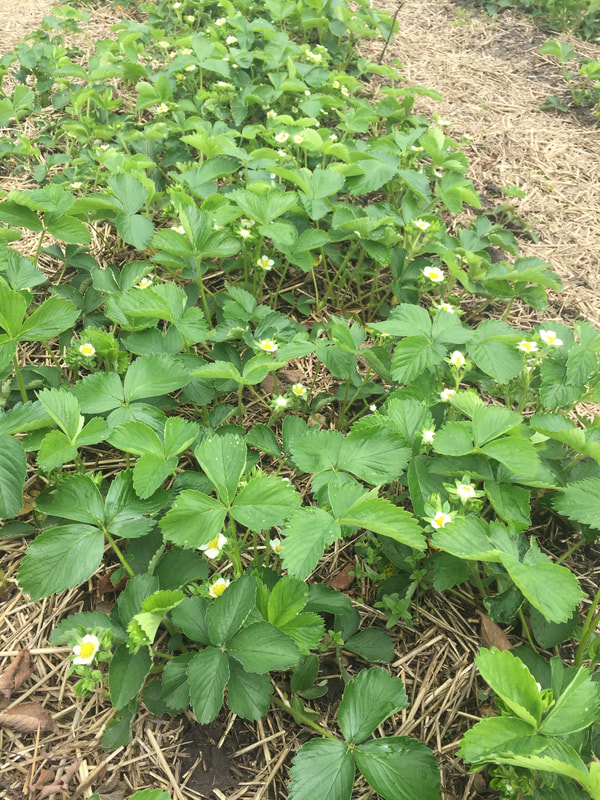
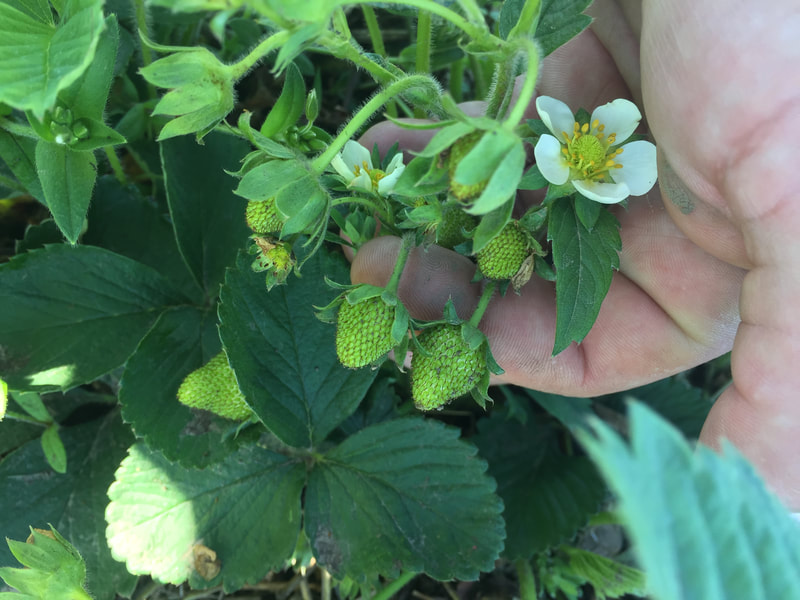
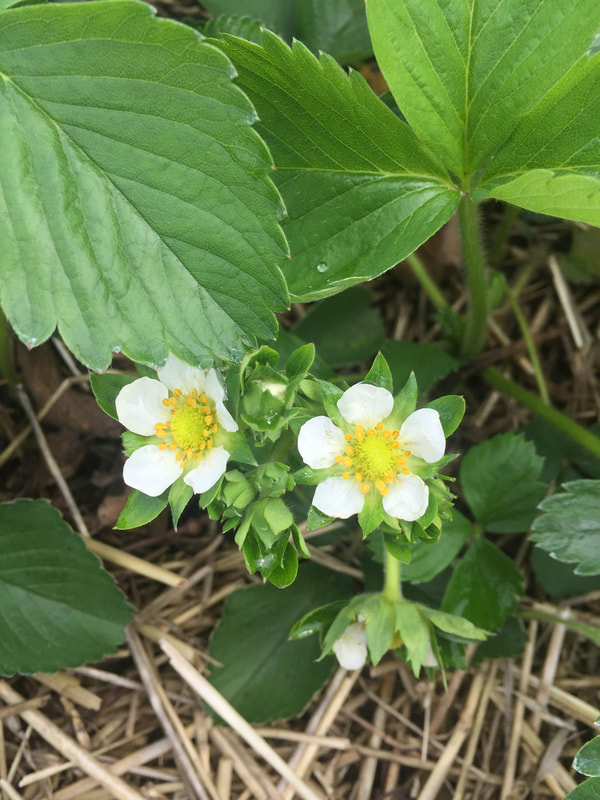
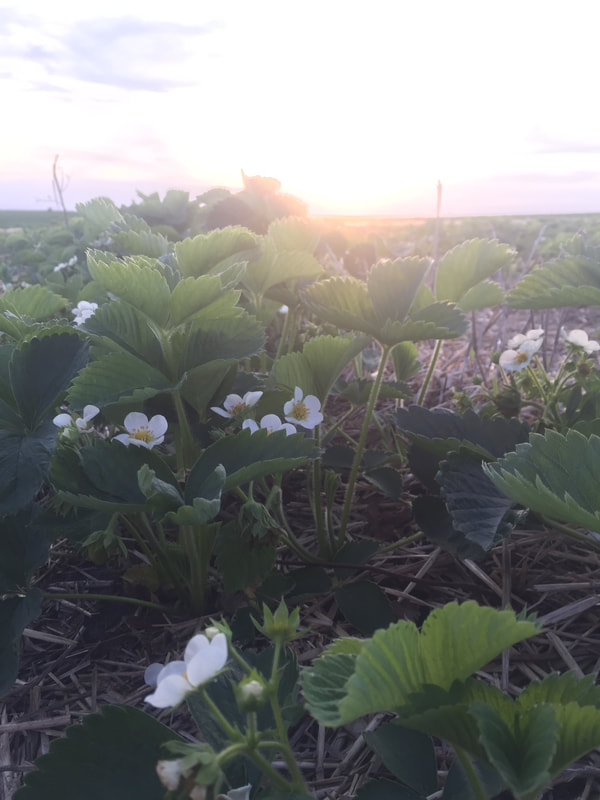
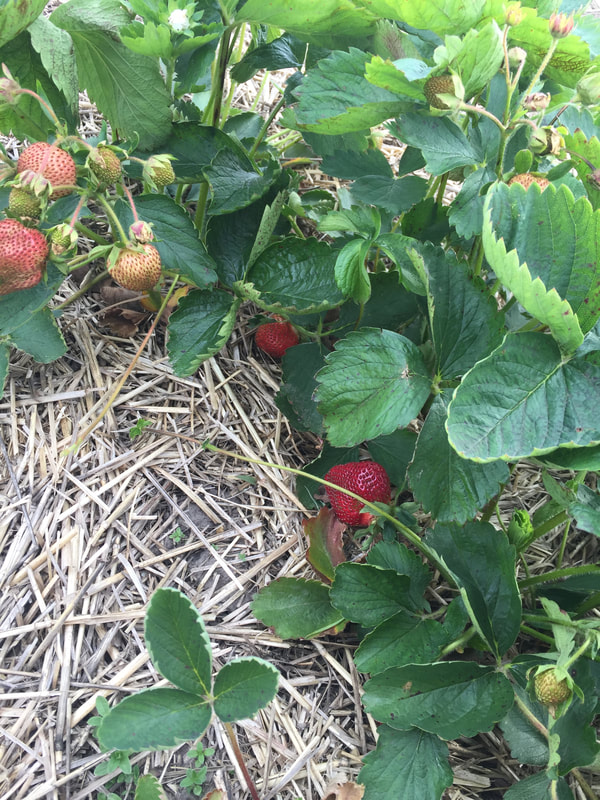
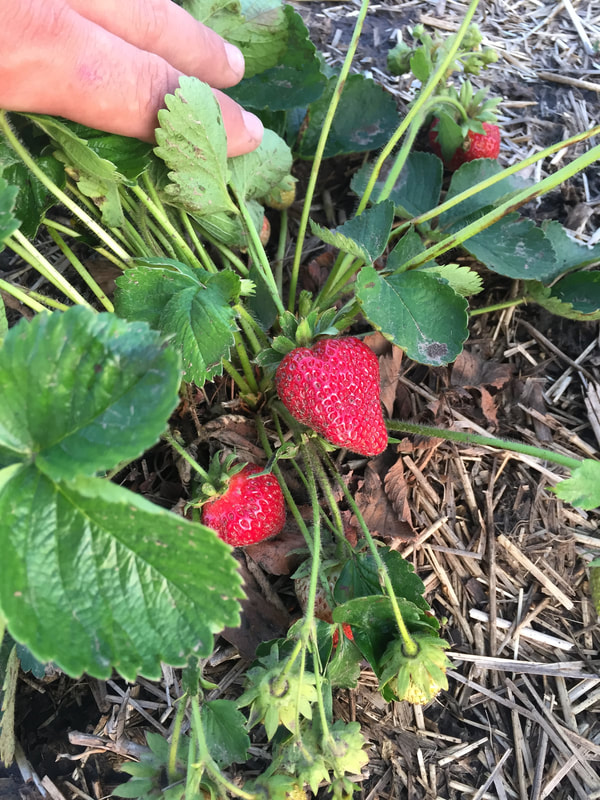
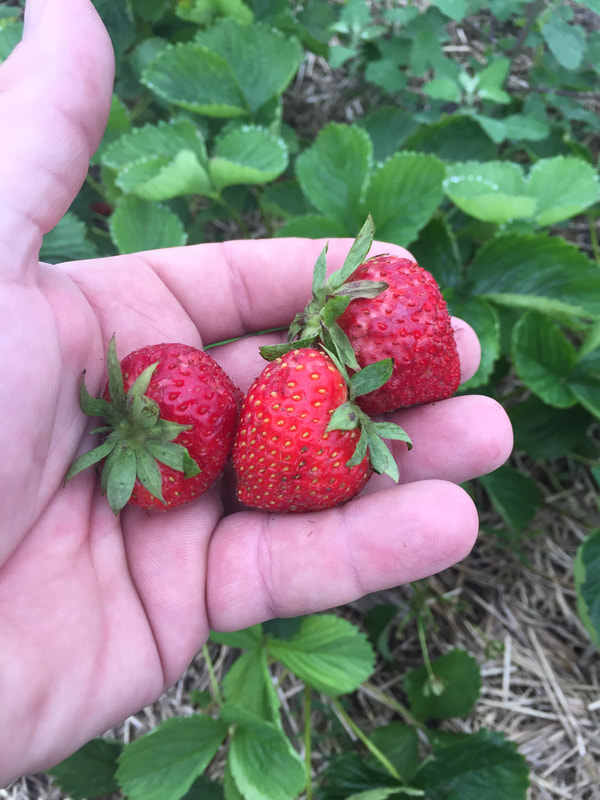
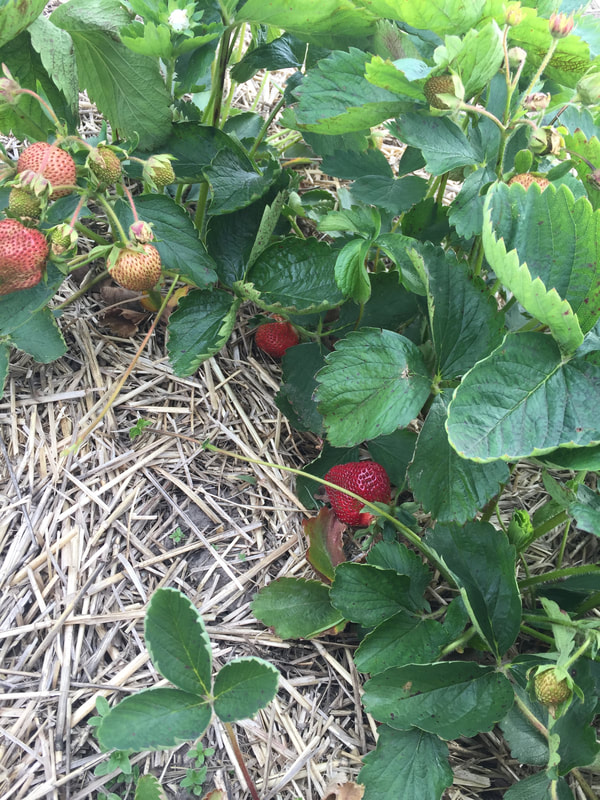
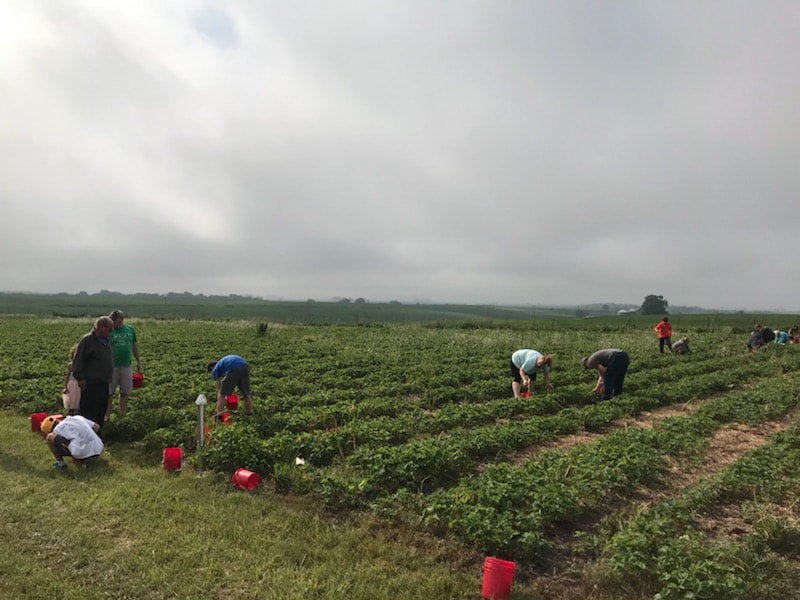
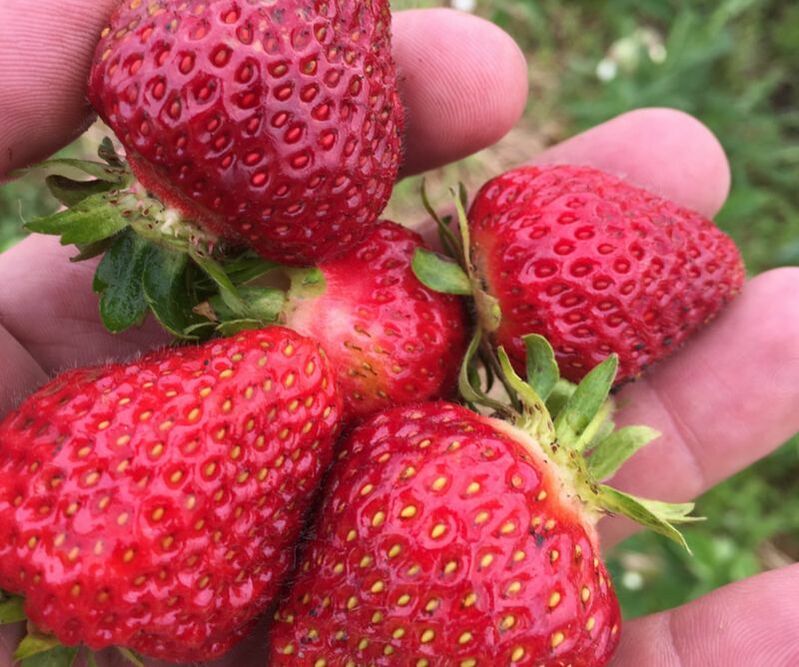
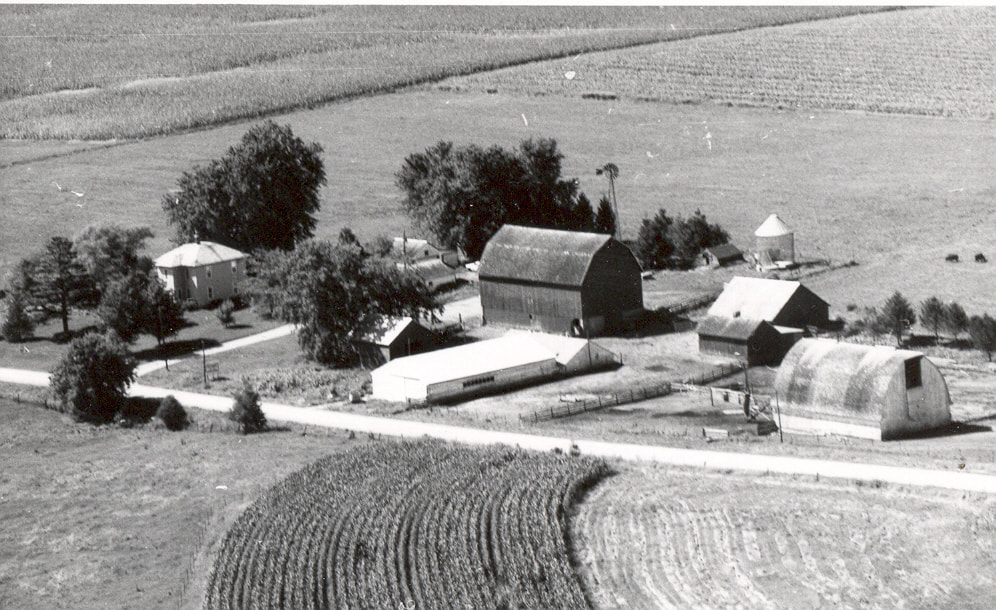
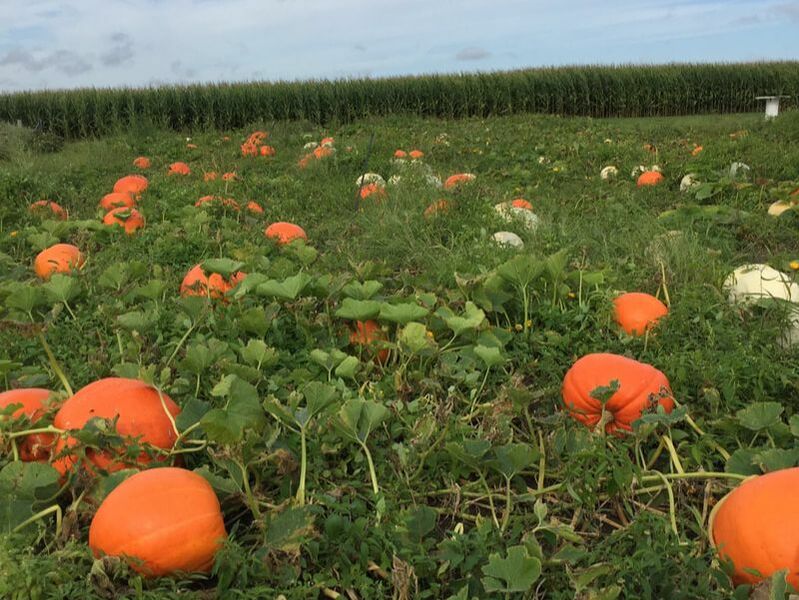
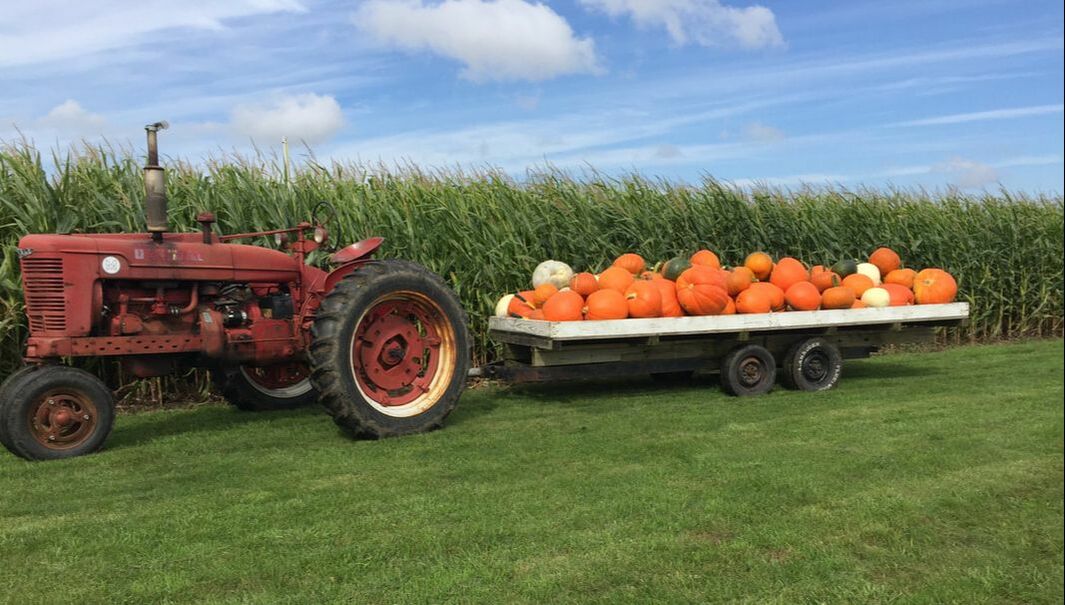
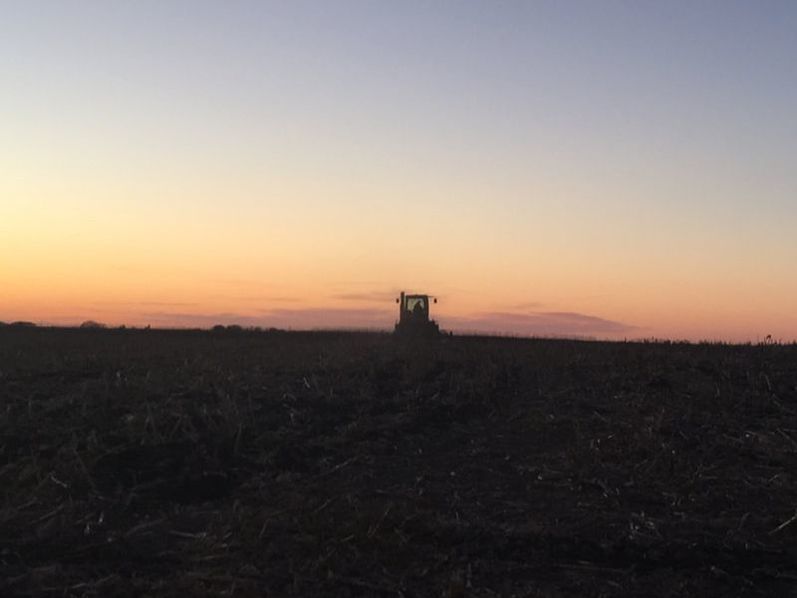
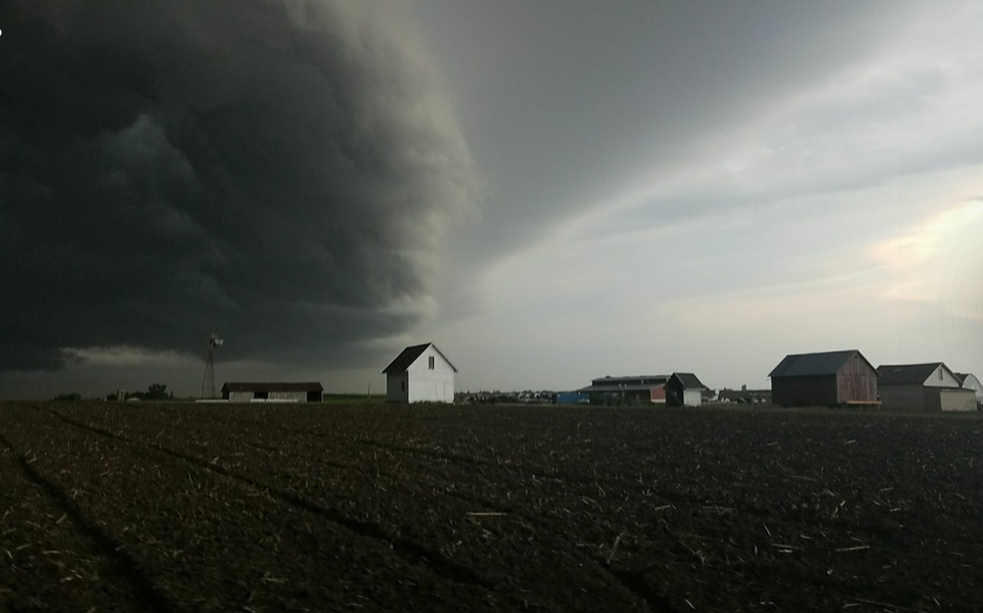
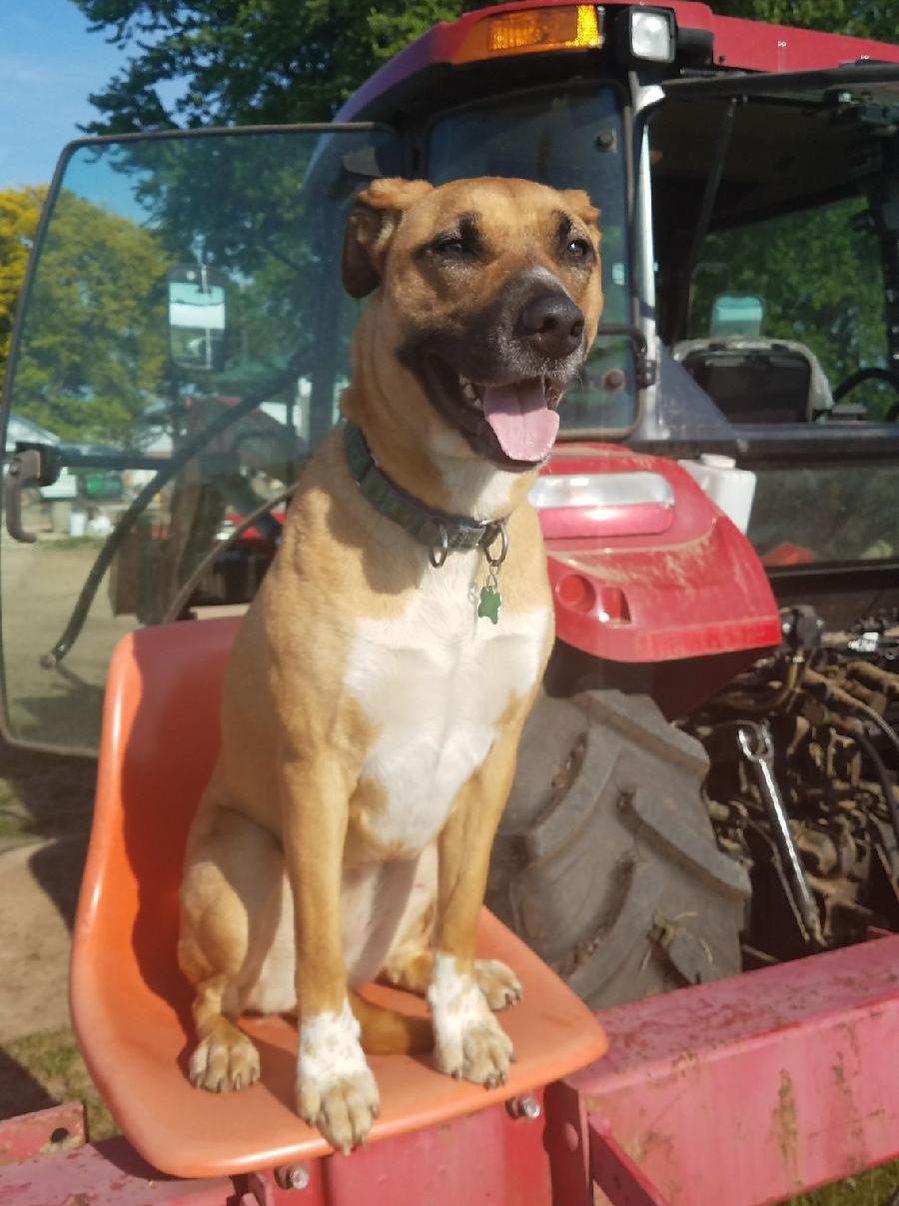
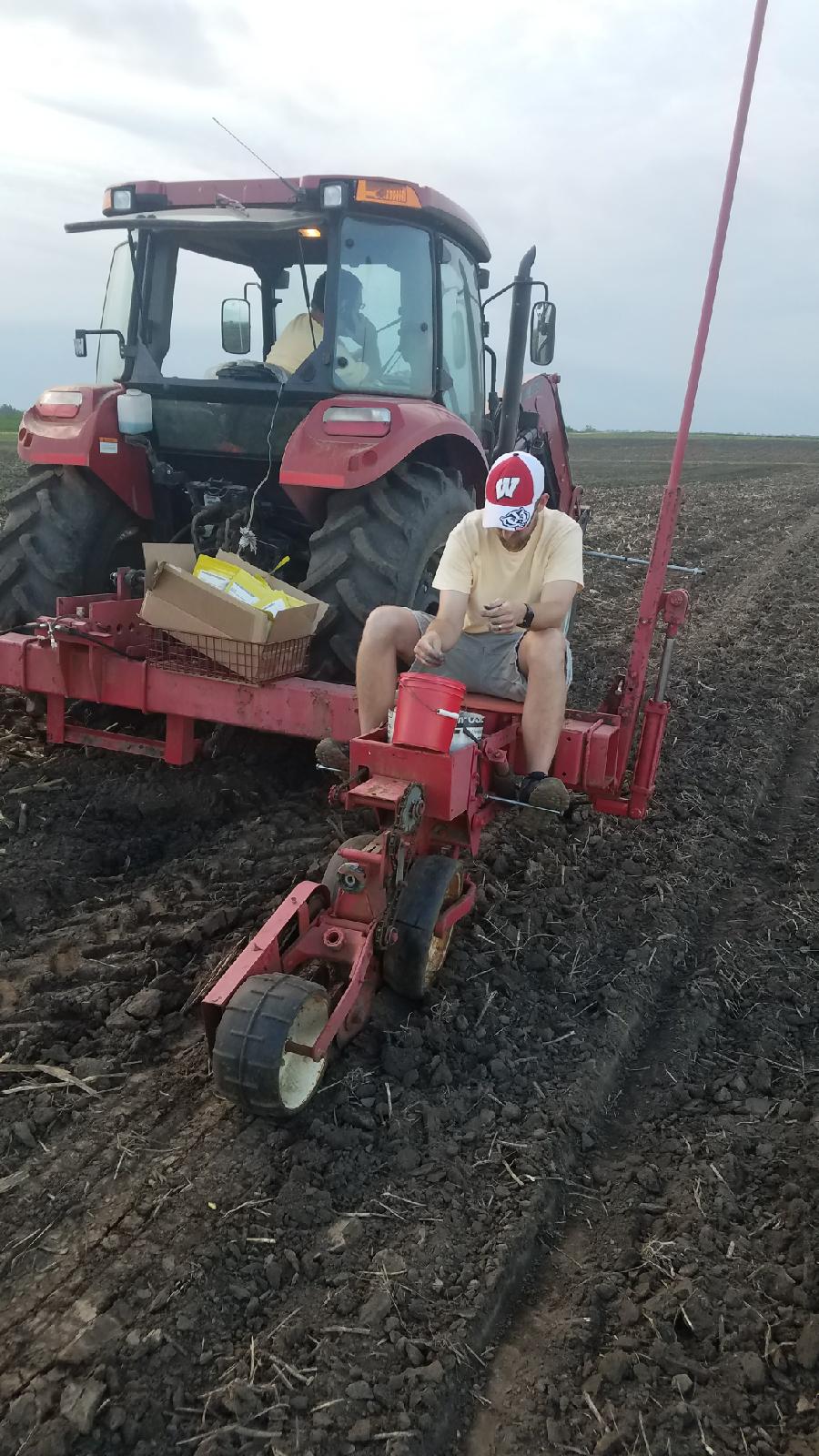
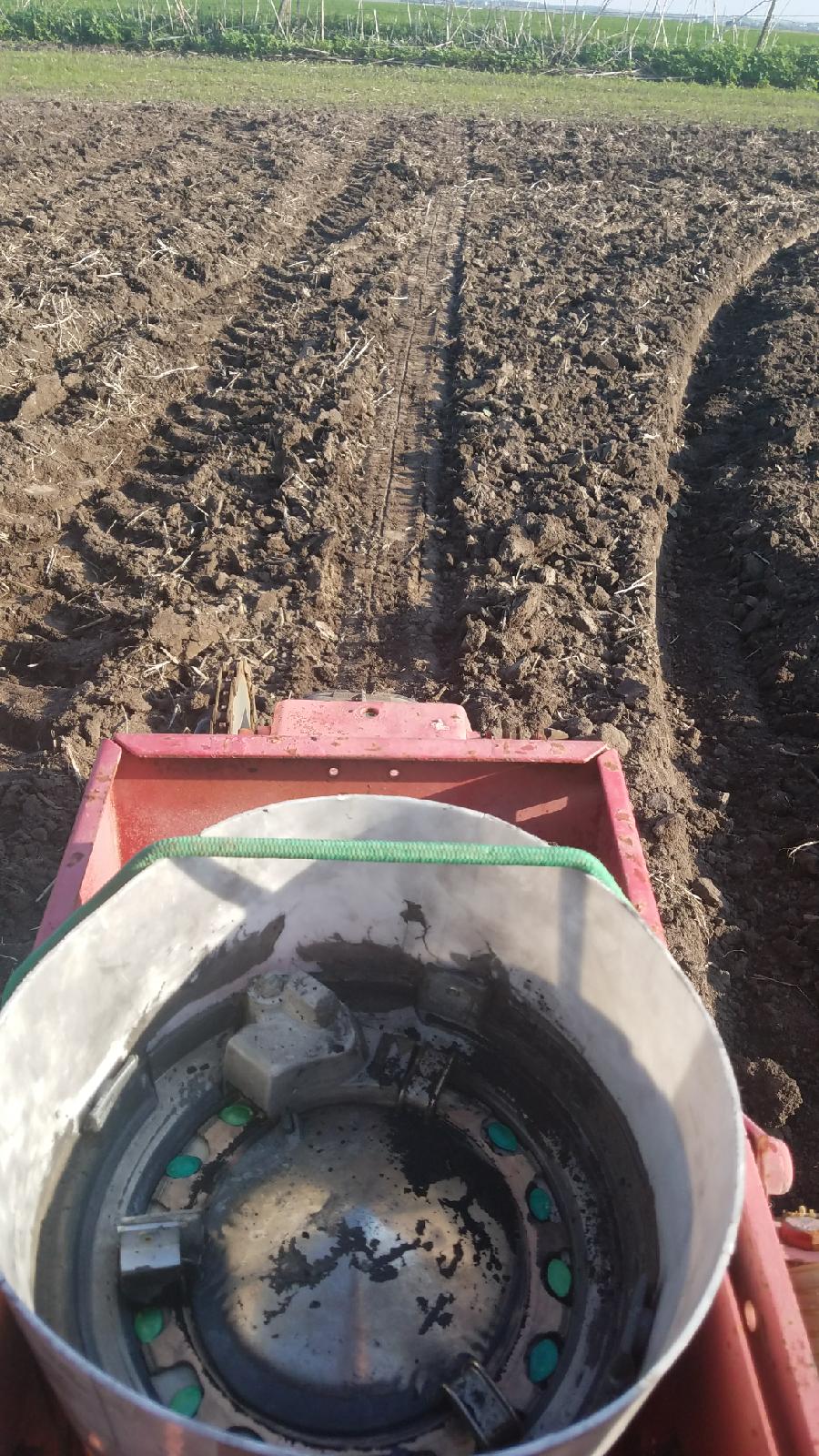
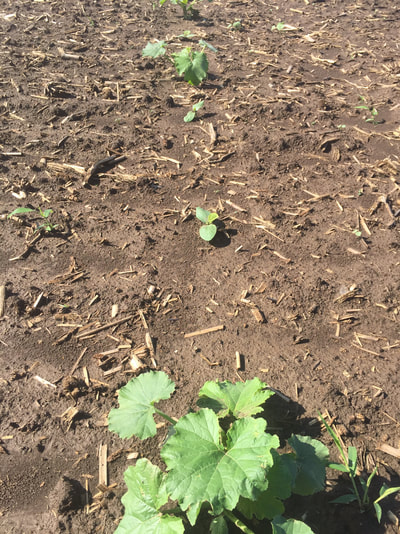
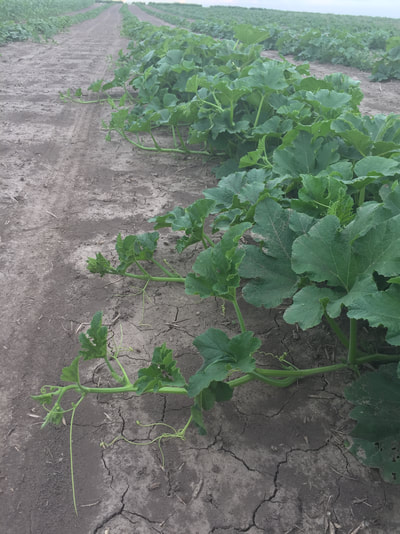
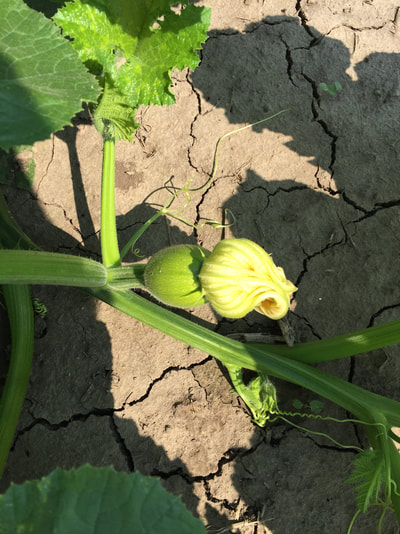
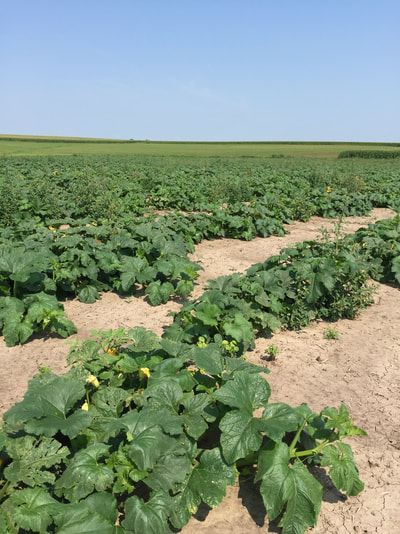
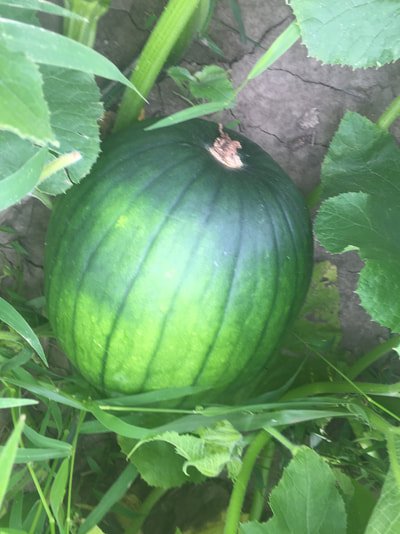
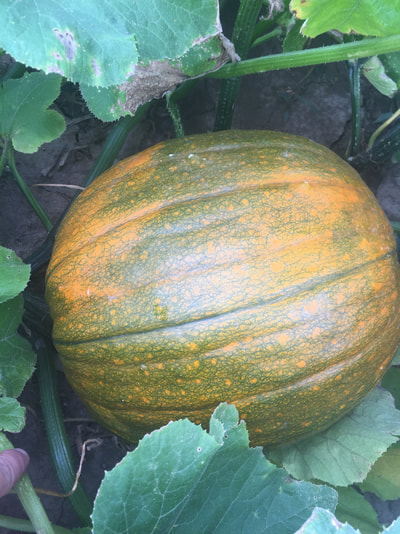
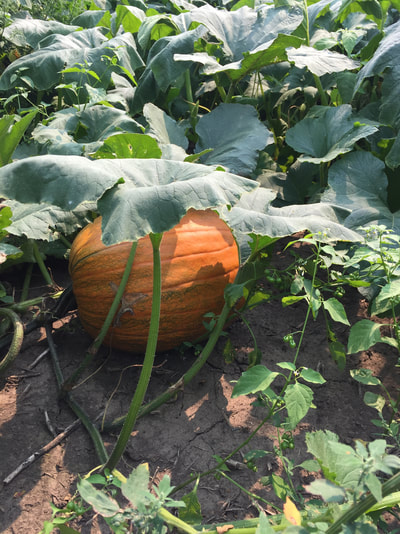
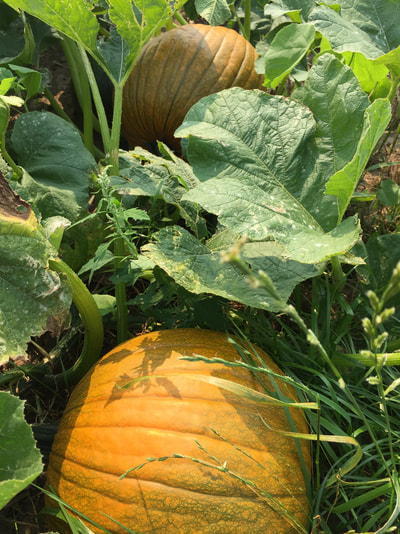
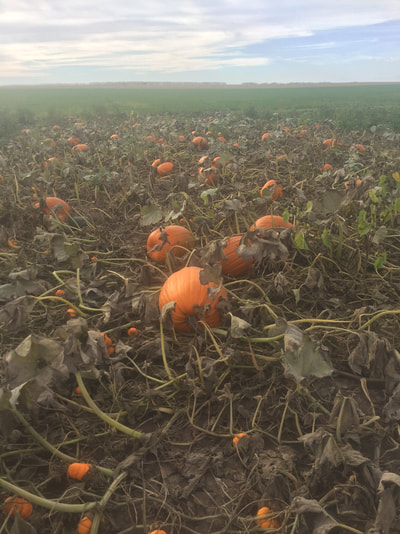
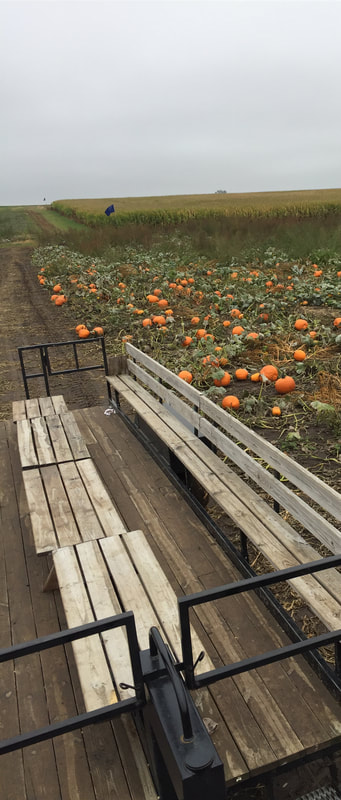
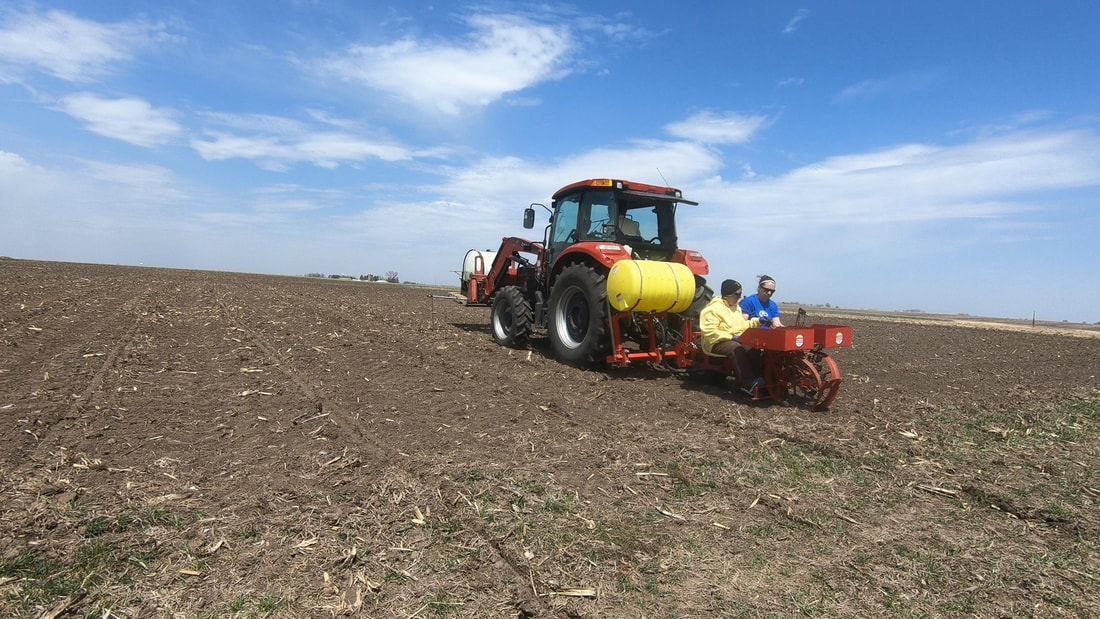
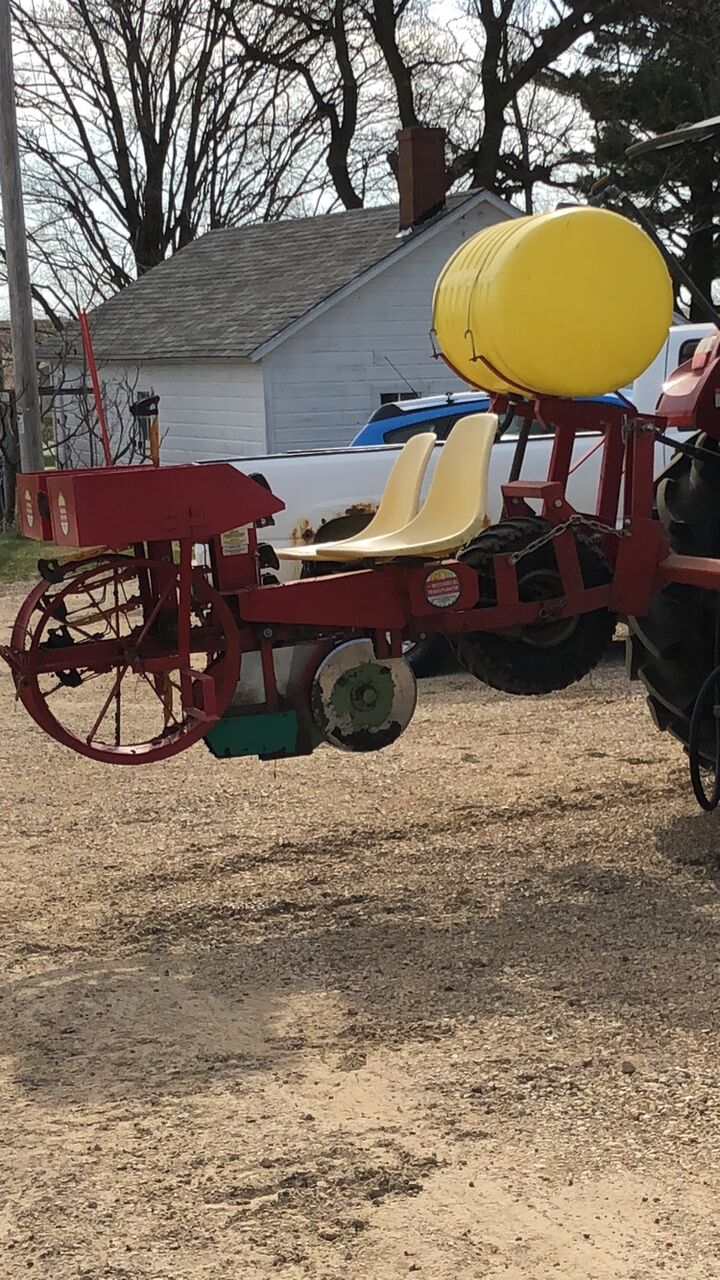
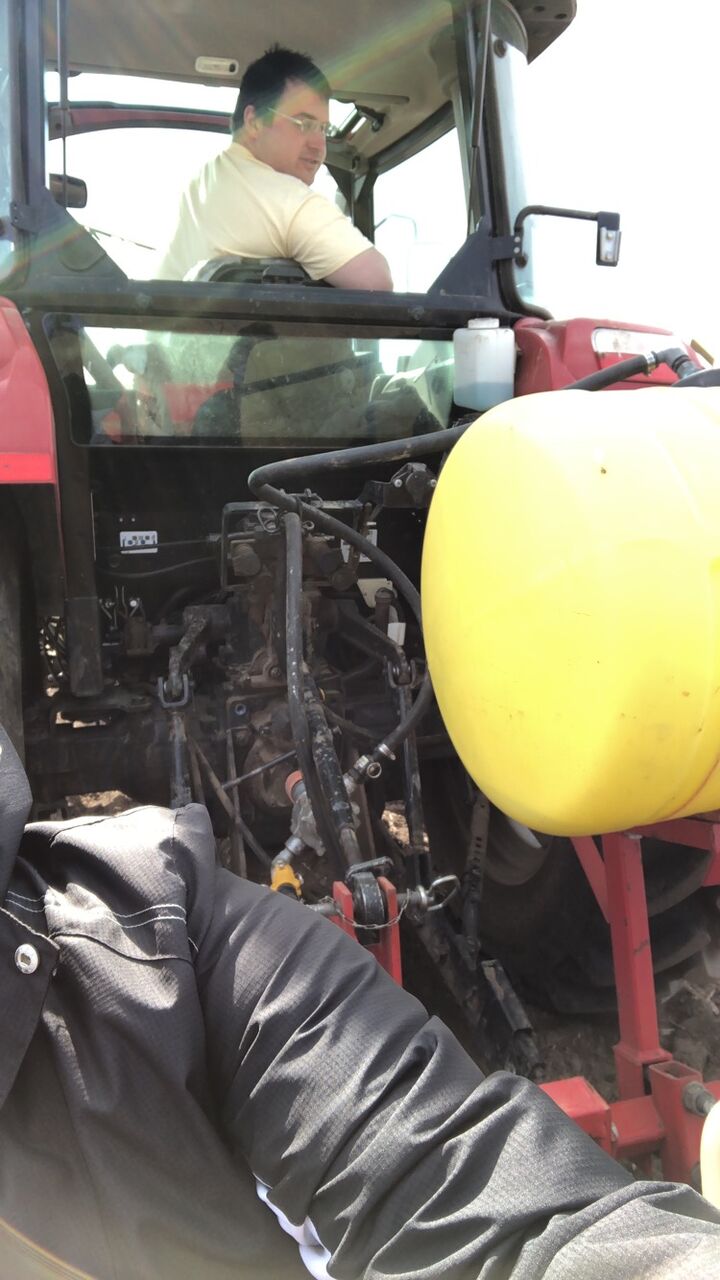
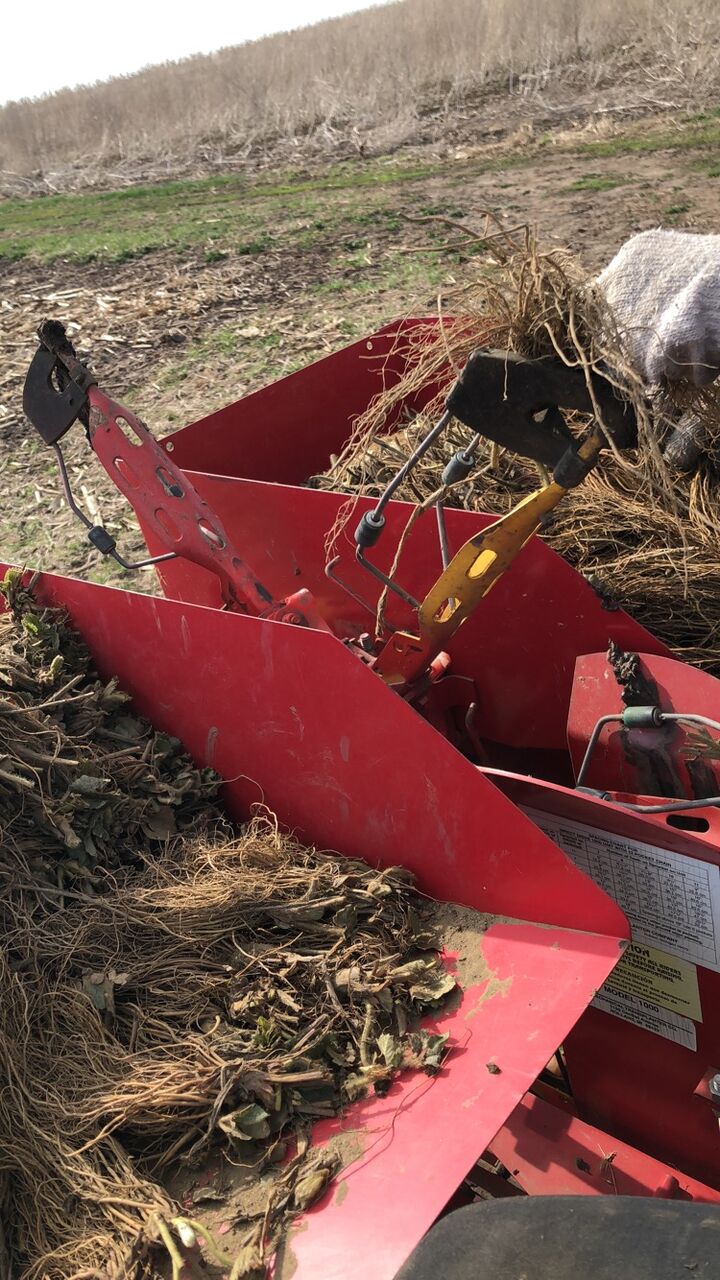
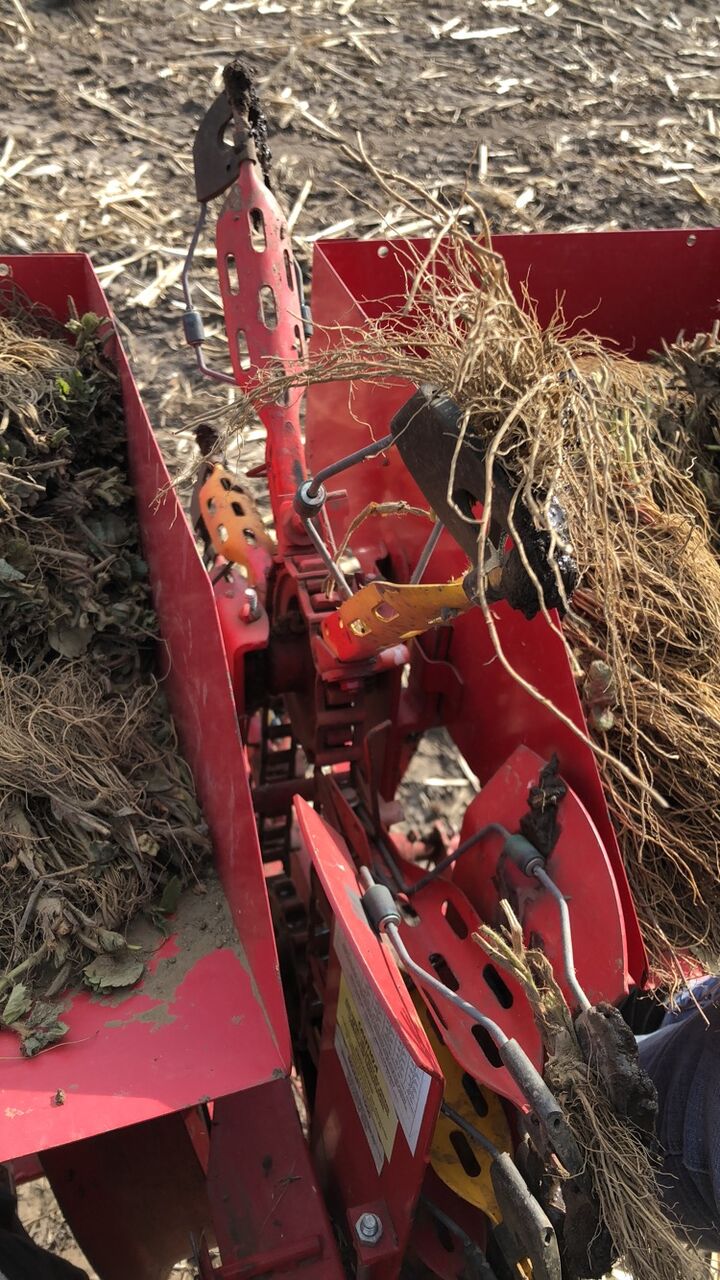
 RSS Feed
RSS Feed
